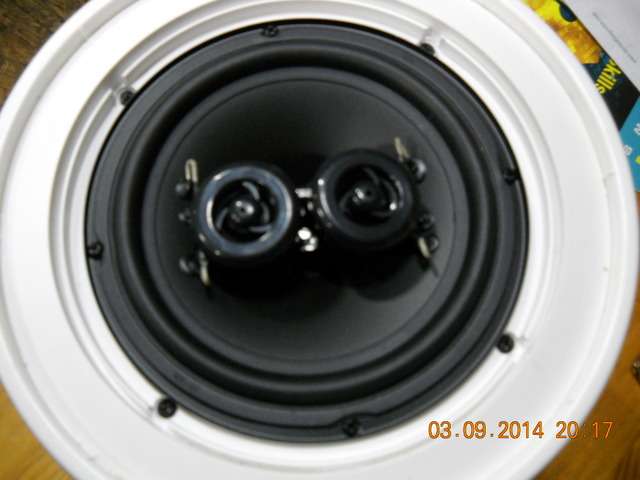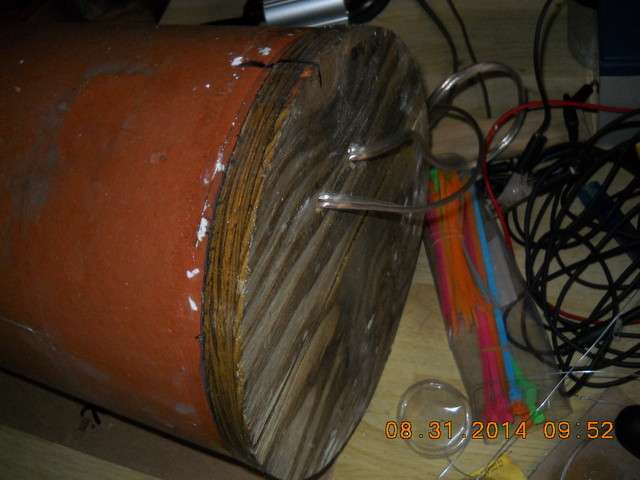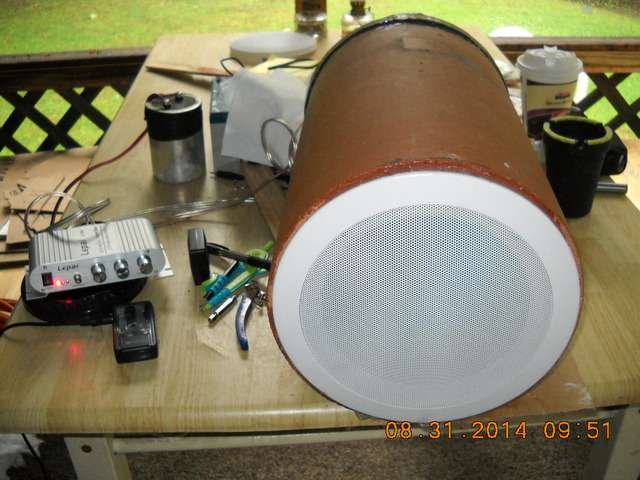I used a section of 8" Sewer Pipe, sealed one end with a piece of 3/4" plywood, and a Single Point Stereo Ceiling Speaker. The pipe has an internal volume of .4 Ft. before gluing cotton batting to the internal sides and bottom..
Smooth bass. Just wish it had better tweets..
MCM Custom Audio 6 1/2'' Single Point Stereo Ceiling Speaker - 50W RMS | 50-14020 (5014020) | MCM Custom Audio

Smooth bass. Just wish it had better tweets..
MCM Custom Audio 6 1/2'' Single Point Stereo Ceiling Speaker - 50W RMS | 50-14020 (5014020) | MCM Custom Audio

That idea of using a pipe is not all that rare and one way to get better high frequencies is to suspend a cone above the speaker. High frequencies are directional and so would normally go straight up to the ceiling. The cone should be of hard material and the sharp end points down so that the highs are dispersed out into the room. Some designs use a fairly small cone too. Only 3" to 4" across the base. The pointy end can be an inch or two above the speaker grill.
Btw I assume you are standing it on its base and facing up.....otherwise all bets are off and you may need to fit an external tweeter.
That's just what I have seen done by others. Never done it myself so those with practical experience will be more helpful.
Cheers, Jonathan
Btw I assume you are standing it on its base and facing up.....otherwise all bets are off and you may need to fit an external tweeter.
That's just what I have seen done by others. Never done it myself so those with practical experience will be more helpful.
Cheers, Jonathan
The driver will accept L/R input. Not perfect "Stereo" but pretty much full range. It has a DVC cone, 2 crossovers, and 2 tweets. No need for 2 units.
I plan to use it laying down on its side, pointing towards the listening area. It's not a close range unit at all. It fills a large room with ease.
I plan to use it laying down on its side, pointing towards the listening area. It's not a close range unit at all. It fills a large room with ease.
Sorry, can´t see them, where are they?2 crossovers, and 2 tweets.
Same driver but in a different project.

An externally hosted image should be here but it was not working when we last tested it.

Congratulations, you have just selected the worst enclosure shape http://www.aes.org/aeshc/pdf/how.the.aes.began/olson_direct-radiator-loudspeaker-enclosures.pdf
The I.D. is pretty much dead acoustically. Heavily padded with cotton batting on the sides and bottom. My idea was to have an enclosure that doesn't "color" the driver and just be sealed air volume behind the cone. It does very well in that aspect. The pipe doesn't flex much..
Please, I may have sounded a bit harsh, but experimentation is fun, and pipes can be made to work, see the latest Linkwitz speaker.
However, there are recognizable diffraction ripples when you mount a speaker like that in a pipe, which you wouldn't see with the same driver in an other type of enclosure.
However, there are recognizable diffraction ripples when you mount a speaker like that in a pipe, which you wouldn't see with the same driver in an other type of enclosure.
I've actually had very good results with the tube enclosure, but it is a "sub-enclosure" for a Peerless 3 inch TG driver, so the front surface of the baffle is large and not circular. Plus I packed it with disks of carpet, then foam rubber, then the more conventional fluffy stuff closer to the driver, leaving a few inches of air right behind the driver. I used silicone rubber glue to hold the internal padding together. The calibrated mic with pink noise says it's extremely flat from 300HZ - 8kHZ. I'm actually using it from 500HZ - 7kHZ in a 3 way system I recently built. I used ABS plastic plummer piping with a 4 inch internal diameter. That Olson paper doesn't take into account certain variables.
I've actually had very good results with the tube enclosure, but it is a "sub-enclosure" for a Peerless 3 inch TG driver, so the front surface of the baffle is large and not circular. Plus I packed it with disks of carpet, then foam rubber, then the more conventional fluffy stuff closer to the driver, leaving a few inches of air right behind the driver. I used silicone rubber glue to hold the internal padding together. The calibrated mic with pink noise says it's extremely flat from 300HZ - 8kHZ. I'm actually using it from 500HZ - 7kHZ in a 3 way system I recently built. I used ABS plastic plummer piping with a 4 inch internal diameter. That Olson paper doesn't take into account certain variables.
You are absolutely right Bob, it is the outside where the diffraction occurs. As long as there is sufficient damping, the inside shape doesn't matter too much.
As soon as a half wavelength fits inside an enclosure, you have an issue. I've found that corners, whether in an enclosure or in a room, are like resonant amplifiers, and the most effective place to put damping materials. A tube without good damping would be highly resonant end to end.You are absolutely right Bob, it is the outside where the diffraction occurs. As long as there is sufficient damping, the inside shape doesn't matter too much.
My approx. 8 inch long tube with about 4 inches of progressively softer damping material measures completely non-resonant. I also glued regular 1/16 inch (?) felt to the inside walls of the pipe between the driver and the rest of the padding. If the pipe was more like 8 - 12 inch diameter, with a 3 inch driver, it would be bad. Stimulating a circle from the center is always going to be highly resonant. When the size of the driver approaches being an effective point source, relative to the diameter of the pipe, it gets bad.
Might be a poor enclosure in "opinion" or theory but I like experimentation. Seems that Bazooka has had good performance results with their automotive bass tubes..
Say that about others but NOT about Harry Olson
1) HE experimented a lot and in fact laid the experimental groundwork for Acoustics
2) he wrote THE Book
Here it is, the Acoustics Bible:
http://cyrille.pinton.free.fr/electroac/lectures_utiles/son/Olson.pdf
3) if you read the article, you'll see that he first calculates peaks and dips, then measures, then compares both (and they match
Best of both worlds.
Did I mention he wrote THE Book ?
As of the Bazooka, it's s CAR audio speaker, about the worst acoustic environment available in wide use, and comparing it to the mostly horrible competition, it does come ahead of the pack.

No.Are you saying that the O.D. of the pipe should be damped too?
- Status
- This old topic is closed. If you want to reopen this topic, contact a moderator using the "Report Post" button.
- Home
- Design & Build
- Construction Tips
- Sewer Pipe Speaker

